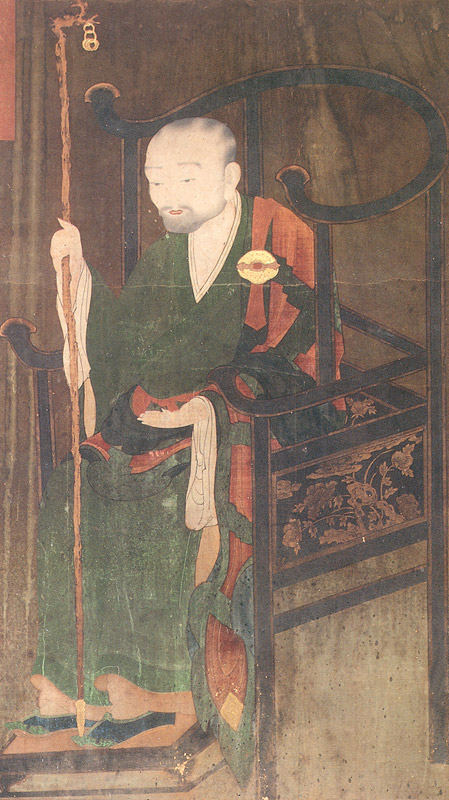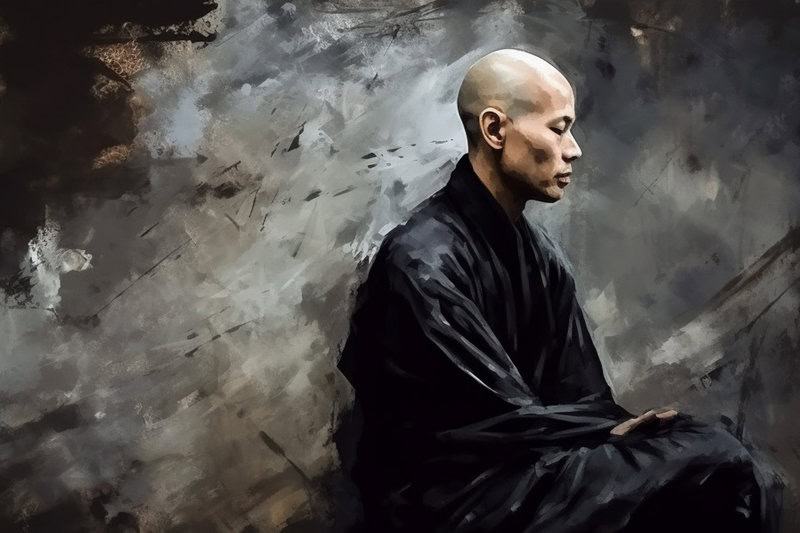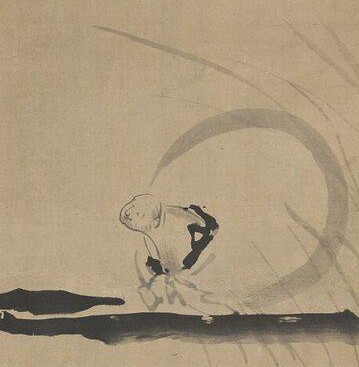Some reflections on a dialogue between Jinul Puril Bojo Daesa (보조지눌), also also known as Bojo, and Chinul, a 12th century Korean master and one of his students:
Question: In our case, what is this mind of void and calm, numinous awareness?
Chinul: What has just asked me this question is precisely your mind of void and calm, numinous awareness. Why not trace back its radiance rather than search for it outside? For your benefit I will now point straight to your original mind so that you can awaken to it. Clear your mind and listen to my words.
From morning to evening, throughout the twelve periods of the day, during all your actions and activities … ultimately who is it that is able to perform all these actions? Speak! … You should know that what is capable of seeing, hearing, moving and acting has to be your original mind: it is not your physical body. Furthermore, the four elements which make up the physical body are by nature void; they are like images in a mirror, or the moon’s reflection in water. How can they be clear and constantly aware, always bright and never obscured – and, upon activation, be able to put into operation sublime functions as numerous as the sands of the Ganges? For this reason it is said, ‘Drawing water and carrying firewood are spiritual powers and sublime functions.’
There are many points at which to enter the noumenon. I will indicate one approach which will allow you to return to the source … Do you hear the sounds of that crow cawing and that magpie calling?
Student: Yes.
Chinul: Trace them back and listen to your hearing-nature. Do you hear any sounds?
Student: At that place, sounds and discriminations do not obtain.
Chinul: Marvellous! Marvellous! This is Avalokiteshvara’s method for entering the noumenon. Let me ask you again. You said that sound and discriminations do not obtain at that place. But since they do not obtain, isn’t the hearing-nature just empty space at such a time?
Student: Originally it is not empty. It is always bright and never obscured.
Chinul: What is this essence which is not empty?
Student: As it has no form or shape, words cannot describe it.
The Collected Works of Chinul

I thought I’d share some words about the inexpressible … foolish being that I am 😉
I was really struck when I read this dialogue yesterday as to how similar the pointing out instructions by the Korean Zen master Chinul were to the pointing out instructions of Mahamudra.
When Chinul asks the student to trace back mind’s radiance, rather than search for it outside (in concepts or answers from the Master), he proceeds to give the pointing out instructions in a very clear and precise way. First he asks him to clear his mind and listen. It’s so easy for us to jump to conceptual answers when we hear a teaching, or are asked a question. In Mahamudra meditation we can ask a question such as ‘who am I?’ and then ‘listen’ for the answer. Before the conceptual mind steps in, there’s a spacious opening, as the conceptual mind lets go, and awareness ‘holds’ the question.
For the beginner, these questions just ‘zap’ the mind, as we have no idea at all what or who we are. Then there’s the rush of thoughts that seek to fill the not knowing.
When we’ve had more experience with these things .. we don’t rush to fill the gap … we can sit in the unknowing … sit with the lack of answer …. and sit in the opening.
Depending on our experience, we can sit in that opening for longer, with the mind clearer .. allowing us to see more clearly ….. and actually know what we see … and not just try to understand it in thoughts and concepts.
ultimately who is it that is able to perform all these actions?
When we look we see no-thing, no-one who is there ‘behind’ our actions. Even the ‘I’, the ‘self’ the sense of being ‘someone’ arises as an ‘object’ to awareness. It comes and goes, and is no more real or substantial than any other arising to mind.
You should know that what is capable of seeing, hearing, moving and acting has to be your original mind: it is not your physical body.
The physical body isn’t there to us, directly and unmediated. Any experience we have that we ascribe to ‘body’ is simply arisings of perceptions in the play of mind. We never actually experience body as such … only our dreamlike experience, some of which we separate out into ‘body’ and grasp onto it as real.
Furthermore, the four elements which make up the physical body are by nature void; they are like images in a mirror, or the moon’s reflection in water. How can they be clear and constantly aware, always bright and never obscured – and, upon activation, be able to put into operation sublime functions as numerous as the sands of the Ganges? For this reason it is said, ‘Drawing water and carrying firewood are spiritual powers and sublime functions.
The endlessly fascinating interplay of emptiness and appearances, of the apparent, and the ultimately true. How wondrous indeed that no-thing actually exists, and yet everything seems to arise, and carry out its own function perfectly! Somehow we’d think that for something to function, it must be real. It must truly exist. And yet, these mirages flit and flicker, yet dance their very own dance of the world, painting all colours on our experience and the world. Truly mysterious, ungraspable and wondrous indeed!
There are many points at which to enter the noumenon. I will indicate one approach which will allow you to return to the source
Chinul gives an approach to working with mind, to allow the student to move away from grasping at appearances as if they were inherently real, and opening instead to how things really are. Chinul asks the student to listen to the birds singing:
Chinul: Trace them back and listen to your hearing-nature. Do you hear any sounds?
Student: At that place, sounds and discriminations do not obtain.
When we let go of the entrancement of believing in ‘objects’ and just open to what really is, we don’t find the solid separate ‘things’ which we believe exist. Instead, we find a magical display of fleeting appearances, all without substance. None have names, none have definite characteristics, and none have anything that we can call ‘this’ or ‘that’, ‘it’s here’ or ‘it’s there’, or even ‘this exists’ or ‘this doesn’t exist’. We have no idea at all what something ‘is’ in this sense. Just empty arisings.
Chinul: You said that sound and discriminations do not obtain at that place. But since they do not obtain, isn’t the hearing-nature just empty space at such a time?
Student: Originally it is not empty. It is always bright and never obscured.
Chinul asks whether because no-thing can be found, whether there is nothing at all. The abyss of nihilism as I believe Nagarjuna called it. The student clearly sees that this emptiness is full, and describes the luminosity of mind. Though no-thing can be found, experience is vivid and clear, blazing in clarity, full in its magical display. Awareness shines, whether the clouds of our ignorance and thoughts obscure it or not. Wakefulness is always present – how could it be otherwise? How could it be possible for our mind to grow quiet and experience this expansive knowingness were it not eternally awake?
Chinul: What is this essence which is not empty?
Student: As it has no form or shape, words cannot describe it.
Asked to describe this luminosity, the student refuses to go where words cannot (unlike myself!!!!) and merely states that nothing definite can be said of that which illuminates the void. (the void – horrible term, but fitting here). Though emptiness is not nothingness, that which is other than nothingness is not a thing, nothing that can be pointed to with words.
How clear this experience that is describes from centuries ago, between two beings I’ve never met!
How crazy these idle ramblings, trying to put the horns on a rabbit, trying to describe the indescribable!




